Miniature Embroidery Techniques
A course by Silvia Peligro , Embroiderer and Textile Artist

Learn the basic stitches to embroider small-scale illustrations
Embroidery is an art that has existed for centuries, and Silvia Peligro, an embroiderer specializing in miniature pieces, has taken on the mission of preserving techniques that have survived to this day. Through her hand-embroidered creations, she has worked with major brands in the textile world, such as Coats and Gütermann.
In this course, learn the stitches that Silvia uses to create her miniature embroideries and, in addition, see how she turns them into figures that range from the simplest, with watercolor, to landscapes with color gradients and depth.
What will you learn in this online course?
19 lessons & 13 downloads
- 100% positive reviews (443)
- 6,392 students
- 19 lessons (4h 23m)
- 13 additional resources (5 files)
- Online and at your own pace
- Available on the app
- Audio: Spanish, English, French, Italian, Portuguese
- Spanish · English · Portuguese · German · French · Italian · Polish · Dutch
- Level: Beginner
- Unlimited access forever
What is this course's project?
Carry out three projects with different levels of difficulty to learn how to make different effects with thread on the fabric.
Projects by course students
Who is this online course for?
This course is for anyone who is interested in drawing with thread and curious about creating authentic miniature pieces.
Requirements and materials
To take this course, basic knowledge of drawing is recommended but is not essential.
Regarding the materials, you need an embroidery hoop in the smallest possible size, embroidery needles in size #7 or larger, canvases, mouliné-style embroidery thread, sharp-tipped scissors, and other materials that Silvia explains.

Reviews

Silvia Peligro
A course by Silvia Peligro
Silvia Peligro, a self-taught graphic designer and embroiderer specializing in miniature pieces, studied Design and Visual Communication at UNAM, a period during which she discovered the work of Maricor/Maricar and was amazed by the way they mix the graphic world with the textile world. She started learning embroidery in 2010 and over time specialized in miniature work because of the precision it requires and how portable it is.
Currently, she is completely focused on her brand, which includes not only embroidered pieces, but also accessories and tools. She also gives workshops for people interested in learning the technique.
She has collaborated with important brands in the textile world such as Coats and Gütermann, and her work has been published by Kena and Glamour magazines.
Content
-
U1
Introduction
-
Presentation
-
Influences
-
-
U2
Materials and preparations
-
The materials
-
Transferring strokes to the fabric
-
Preparations before embroidering
-
-
U3
The stitches
-
Backstitch
-
French knot
-
Satin
-
Cordoncillo
-
-
U4
Application of stitches
-
Basic project - Part 1
-
Basic project - Part 2
-
Intermediate project - Part 1
-
Intermediate project - Part 2
-
Layered embroidery
-
-
U5
Advanced project
-
Weathered sky
-
Grass
-
Flowers and final details - Part 1
-
Flowers and final details - Part 2
-
Assembly of the piece
-
-
FP
Final project
-
Miniature embroidery techniques
-
What to expect from a Domestika course
-
Learn at your own pace
Enjoy learning from home without a set schedule and with an easy-to-follow method. You set your own pace.
-
Learn from the best professionals
Learn valuable methods and techniques explained by top experts in the creative sector.
-
Meet expert teachers
Each expert teaches what they do best, with clear guidelines, true passion, and professional insight in every lesson.
-
Certificates
PlusIf you're a Plus member, get a custom certificate signed by your teacher for every course. Share it on your portfolio, social media, or wherever you like.
-
Get front-row seats
Videos of the highest quality, so you don't miss a single detail. With unlimited access, you can watch them as many times as you need to perfect your technique.
-
Share knowledge and ideas
Ask questions, request feedback, or offer solutions. Share your learning experience with other students in the community who are as passionate about creativity as you are.
-
Connect with a global creative community
The community is home to millions of people from around the world who are curious and passionate about exploring and expressing their creativity.
-
Watch professionally produced courses
Domestika curates its teacher roster and produces every course in-house to ensure a high-quality online learning experience.
FAQs
Domestika's courses are online classes that provide you with the tools and skills you need to complete a specific project. Every step of the project combines video lessons with complementary instructional material, so you can learn by doing. Domestika's courses also allow you to share your own projects with the teacher and with other students, creating a dynamic course community.
All courses are 100% online, so once they're published, courses start and finish whenever you want. You set the pace of the class. You can go back to review what interests you most and skip what you already know, ask questions, answer questions, share your projects, and more.
The courses are divided into different units. Each one includes lessons, informational text, tasks, and practice exercises to help you carry out your project step by step, with additional complementary resources and downloads. You'll also have access to an exclusive forum where you can interact with the teacher and with other students, as well as share your work and your course project, creating a community around the course.
You can redeem the course you received by accessing the redeeming page and entering your gift code.



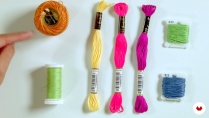
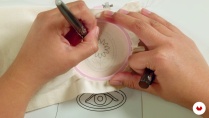
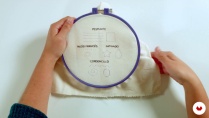
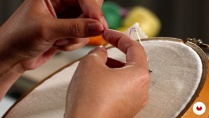
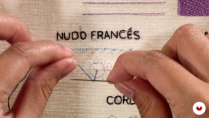
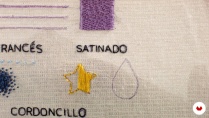



hectresendiz
Aunque concluí la visualización del curso, fue muy poco lo que este curso me aportó, ya que considero que no aprendí anda nuevo, a mi parecer debería ser aún más claro que es un curso para personas principiantes en el bordado y con poco conocimiento en el bordado.
View translation
Hide translation
monsita_18
El curso es bueno sobre todo para quienes están iniciando, a mi parecer la tutora no es la mejor en comparación a otras con las que he cursado aquí en domestika
View translation
Hide translation
loretinamx
Me desespere un poco por que ya conozco las puntadas, explica con claridad y me parece interesantes gracias
View translation
Hide translation
yesicaluzaguirre
El curso brinda los consejos necesarios y la guia adecuada para desarrollar un proyecto adecuado de bordado en miniatura, el profesional siempre esta dispuesto a responder inquietudes o dudas, se nota su formacion y experiencia en el tema.
View translation
Hide translation
luzpleyadiana333
Me está encantando el curso, muy bien explicado y con claridad.. gracias Silvia!!
View translation
Hide translation